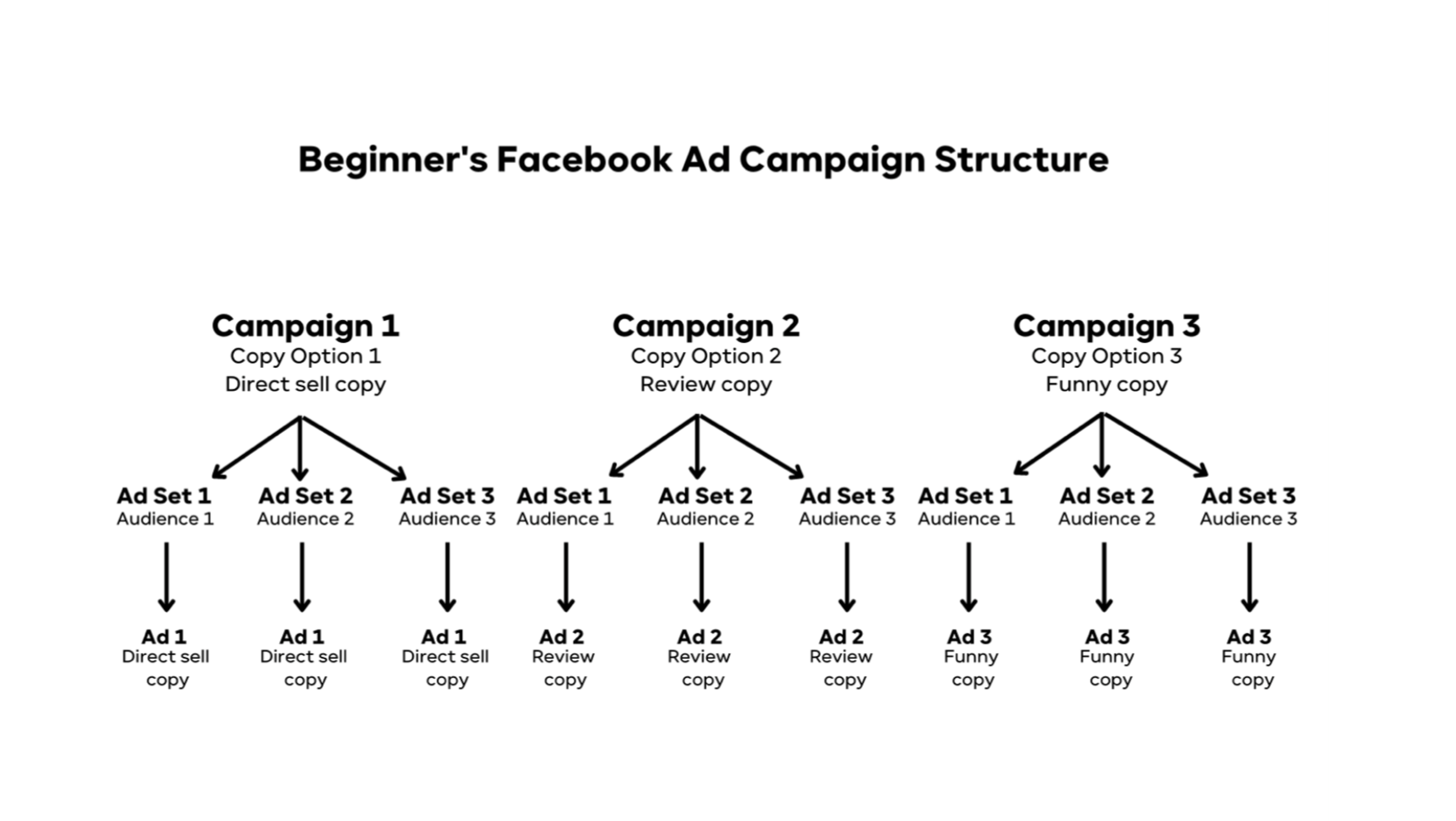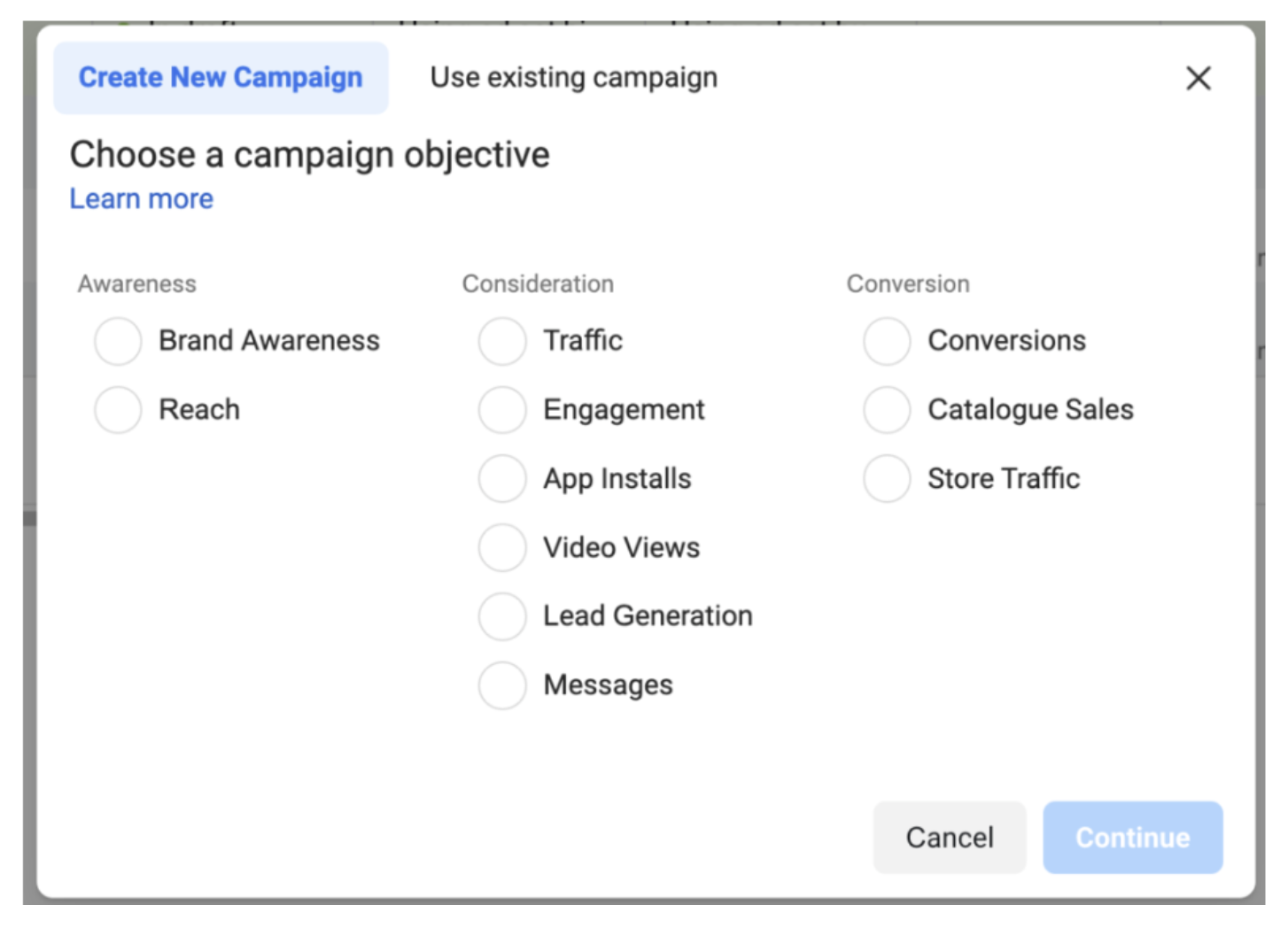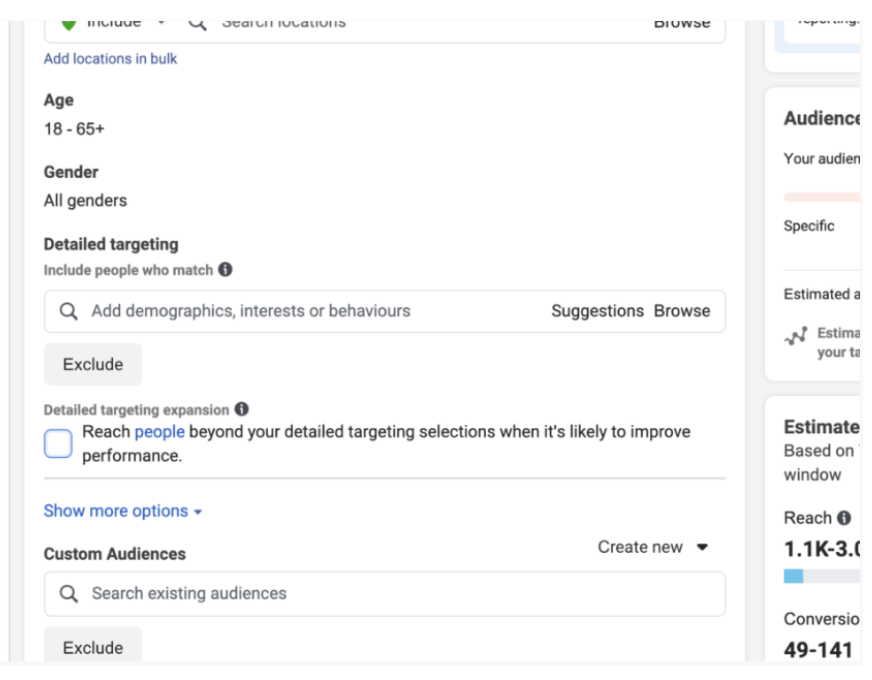Beginners FB Ads Guide For e-Commerce Brands
So, you’re thinking of trying out Facebook ads for the first time for your eCommerce business.You’ve got your online store in your website all set up, you’ve optimised for conversion, you’ve got sufficient stock, you’re starting to see traction with your sales, but now you want to seriously scale…Well you’ve come to the right place!
Paid ads in general, and specifically Facebook & Instagram ads for online retailers, are one the best ways to build out a sustainable and scalable revenue generating machine for your brand.There’s a reason why Facebook, alongside Google, is the biggest ad platform in the world. On average, over 1.6 billion (yes billion) users visit Facebook each day. That’s 1.6b potential customers to sell your products to.All these users means that as a platform, Facebook has the largest global network of audience data, which allows for far better targeting in your specific niche!
So you’re convinced Facebook is the place for your brand, but where do you start? WTF is a Facebook Pixel? Should you use daily budget or lifetime budget? Don’t fret! I’ve created an easy Facebook & Instagram ads tutorial to hold your hand and help you launch your first campaigns.
This advice is based on my experience over the last 6 years managing a paid ads agency (Snowball Creations) specialising in all kinds of eCommerce businesses.You need all this basic stuff in place to get the most out of your budget – So let’s get started!
Step 1: PreparationSet Up A Facebook Page And Instagram Account:
First off, we need to set up your Facebook page and your Instagram account. You can’t just run ads across Instagram or Facebook if you don’t have a profile/page. You can create and manage ads for both of these platforms from within the Facebook Ads manager.
Here’s is a simple guide from Facebook themselves to complete this step.
Then you can create your profile for Instagram by just getting the app on your phone or tablet and singing up like any other person creating a profile. Here’s a guide for that too if needed.
The next step is switching from a personal account to a business one. Here’s how.
Finally, you need to connect your Facebook page to your instagram account to that they’re linked.
Set Up Your ‘Business Manager’:
Now you need to create a business manager account in Facebook. Some people refer to this as Facebook Ads Manager and the name is pretty self explanatory.
Here’s a quick guide to set up your ads manager account.
When you’ve done that, you then need to create an ad account, add any payment details, and invite your colleagues as users.
(Note: Make any new users you add are given the sufficient permissions to access all levels of your ad account and campaigns.)
Connect The Facebook Pixel:
This is a vital step that will allow you to gather data on who is visiting your website/landing page, and where they came from. You can use this data to create things like lookalike audiences to target with your ads.If your only goal is to get views or engagement on your ads then you can skip this, but for basically every online seller, you will definitely want this in place.
Within the settings of your business manager account, you can create a Facebook pixel.
For eCommerce companies using Shopify for their website, there are some really useful integrations that make all this tracking very simple. You can just head to the sales channel section of Shopify and connect your store to your Facebook. Here’s a guide on how.
If you don’t use Shopify, you can follow this guide to set up the pixel in Facebook Ads Manager.
Remember To Verify Your Domain:
People often forget this step, but it is needed and sounds more complicated than it is. Just follow this quick guide.
Step 2: Campaigns
Now let’s get into the nitty gritty (and more creative) part…The campaign structure I’m going to explain is assuming you have an average starting budget of around £1,000 per month for your Facebook Ads.If you have far more pieces of content you want to test, then you’ll need more budget, and if you have even less than 1k to spend, you could try reducing the number of overall ad variations.Essentially what you’re doing here, and what PPC advertising is in it’s essence, is creating a giant A/B testing machine to learn what does and doesn’t convert for your brand and your products.
This is the structure you’ll be building:

By using this strategy, you’ll be testing 3 different variations of audiences, and ad copy (text/caption) within your Facebook and Instagram Ads.
Getting The Facebook Ad Copy Right
You want to have a distinct headline and copy alongside your images/videos for each different ad copy. Below I’ve suggested three different angles to test for you:
Direct Pitch – For this you’ll be focusing on the most compelling USPs and benefits of your eCommerce products.
Reviews – This option is pretty self explanatory – Sharing positive reviews/testimonials from happy customers.
Humorous/quirky – One other way to stand out among your competitors is to just portray far more personality and humour. This strategy can catch users off guard and disarm them. The aim is to create a fun impression around your brand online.
The copy is equally as important as the images or videos in your ads. It’s where you’ll have a CTA (call to action) that actually drives conversions. You want to put plenty of time and effort into really nailing it, and you want to continuously be testing different copy to improve on your results.
Ultimately, which approach in the copy is best for your products and brand really depends on what is best going to represent what’s different about your particular offering. Facebook Ads, like any PPC, is all about testing, testing, testing.For example, some light-hearted, self deferential humour can work well for retailers like ASOS who are mainly targeting a very young, chronically online audience. But if you’re selling more premium jewellery products for example, then jokes might not quite fit with your brand.
Choosing Your Audiences
The next step is trying to find your target audience on Facebook and instagram, and the simplest way to start is to segment by Facebook ‘interests’.Let’s take a vegan skincare brand for example. You have some brand new, colourful branding created to try and attract some new customers and reengage your existing customers. For this scenario, you could try building an audience on Facebook of people that have shown an interest in skincare, veganism, or cosmetics.
Another way to approach it could be combining Facebook users have have shown an interest in both skincare, and veganism, rather than keeping them separate. There’s likely to be some overlap between these two groups, and joining those audiences helps you to narrow down even more who is seeing your Facebook ads. In theory, they like two things that your product represents, so should be even better potential customers.In summary, you need to create a clear distinction between each audience you test with a theory that you’re testing. For example, you might theorise that anyone who has liked a competitors posts will also potentially be interested in buying your range too.
Using this structure I’ve suggested, you’re trying to end up with 3 separate audiences, to use for each different Facebook Ad set. Those three audiences will be the same across all campaigns.
Avoid These Mistakes
Further down in this article I’ll go step-by-step to help you build the actual campaign within Facebook Ads Manager, but first I’m going to tell you some of the important things you need to be aware of, and some big landmines that Facebook loves to leave that could seriously waste your time (and money)…
Which Is The Right Campaign Objective For You?
Within Facebook Ads you will need to choose an ‘objective’ for your campaign based on what your main goals are. If you want to just get your ads in front of loads of people in the audiences you created, you can select ‘traffic’ or ‘engagement’ as your objective. This tells Facebook to show your ads to as many people as possible.
But for most eComm brands, I’d suggest setting a goal that is much further down your sales funnel. By this I mean selecting an objective like ‘conversions’ or perhaps traffic but specifically on your checkout page. This means you’ll be optimizing your ads for sales.
It varies massively depending on your route to market. For example a food brand focusing on getting more sales of their products in supermarkets would be more focused on brand awareness over online sales.One important thing to remember though is that if you’re running Facebook Ads for the first time, you won’t have any data built up, and so optimising for something like conversions will be difficult as Facebook has no past conversion data to base things off of. For this reason brands will often start out with a campaign goal further up the funnel like site visits, or perhaps time spent on the site as a nice middle ground until sales start coming in.

Set Your Budgets At The Right Level
When you’re budgeting for your ad spend to Facebook, you should aim to split it evenly across all your various ad sets. Facebook does give you the option to set your budgets at the campaign level instead of further down in the ad sets, but this gives Facebook the power to decide where to spend your money. From my experience running PPC campaigns for clients in all sorts of industries, Facebook hasn’t proven themselves to be very effective at judging the success of campaigns without a lot of data to go off. So it’s an especially ineffective budgeting strategy when you’re just starting out.
I would instead suggest that you set a daily ad spend budget for each Instagram or Facebook ad set.So if you have a $1,000 a month ad budget for example, you can then divide that number by 30 days to give you $33.33 a day budget. Then, you want to further divide this number by the 9 ad sets you’ve created, giving you about $3.70 per ad set per day.Then obviously as the ads run and you start to see data and conversions coming in, you can make educated choices on which ad sets deserve more or less budget.
Should You Use Dynamic Creative Ads?
One other feature you’ll likely come across within Facebook is ‘Dynamic Creative ads’. This feature allows you to create multiple different options for each section of your ads, such as the ad title, the images, or the CTA.Then Facebook will A/B test those options you’ve created and attempt to ‘learn’ what does and doesn’t work for your business.
In my experience however, Facebook’s not the best at judging these things unless they have a massive amount of data built up to help them.
For example, a common mistake could be that Facebook prioritises and spends more on ads that are getting a higher CTR (Click-through rate) or a lower CPC (Cost-per-click). But although those metrics are promising, as an online retailer your focus should be on optimising off of conversion data, not just engagement with your ads.
What Is The Detailed Targeting Expansion?
When you go about setting up a Facebook audience, there will be a small checkbox labelled ‘’detailed targeting expansion’, which is usually turned on by default.
This setting often reduces the quality of your audiences, as it lets Facebook move away from the parameters you’ve chosen and push your ads where they think is best/ still relevant.
There’s probably a theme becoming obvious to you…Don’t always do what Facebook suggest! It might sound odd, but honestly, most Facebook or Instagram ads experts will agree that the automated settings they suggest you use aren’t suitable for the majority of businesses trying paid ads.

Use Manual Placements
In the case of audience placements, it’s actually often best to leave these open and to allow Facebook to push your adverts where it sees fit across their platform. However, the ‘audience network’ specifically has proven to be a lower-quality option and doesn’t convert very well when we’ve used it for our eComm clients.
For most brand I recommend switching to manual placements, and unchecking ‘audience network’ too.
How To Build Your Campaigns
There is a great guide showing a complete step-by-step and up-to-date tutorial on how to build your Facebook or Instagram campaigns. You can read that here.
3. And We’re Live!
Now you’ve got your ads manager account set up correctly, and your campaigns are built out with a solid starting matrix of different copies and audiences to be tested.
You’ve double and triple-checked your ad spend is input correctly and you’re not going to accidentally spend more than you can afford to.
So, you’re ready get your ads live for the first time (YAY!)It’s time to start packaging and shipping those products…
It’s All About The Data

Ideally you should be checking up on your Facebook campaigns daily, or as frequently as you’re able to. With that being said, you should never try and make decisions too quickly before you’ve given the ads a chance to run and build up data. However by logging into your account daily you’ll be able to quickly spot and address any obvious errors presenting themselves that could waste your hard-earned money.
Usually, after about a week, there might be enough data for you to start making decisions on which ad copy, audiences, or creatives are working for you and which have a really high cost-per-click or low click-through rate and might be best to stop running.
Perhaps just one of your theories and ad sets is producing all of your conversions, and you want to decide to turn off all other options in order to see an immediate jump in your ROAS (Return on ad spend).
In short, you’ll slowly whittle down the campaign to just the best performing, meaning you’ll be continuously improving the return on your investment.
4. You’re done…Kind Of!
So, now you’re up and running. You’re a Facebook and Instagram advertising expert (or on your way at least).
You’re seriously building your customer base and a name for your brand online. This guide has helped you get the foundation knowledge on Facebook Ads needed to scale your online sales!
The best ad campaign objective for your business will vary if, for example, you’re aiming for lead generation rather than actual conversions from an online store.
But in the eCommerce world, whether you’re selling skincare sets, bedding, dog toys, books, or furniture products, this guide should help you on your way to building a scalable revenue generating machine from Facebook.This of course only scratches the surface of all there is to learn about Facebook ads and paid advertising more broadly, and the 100s of nuances in the platform and your testing that can make or break your campaigns. But if you want to continue learning my top tips and tricks then you may find my YouTube series useful.
There’s actually a great video going over a checklist of everything you need before starting to spend your money on paid ads.
If you want to really snowball your growth and don’t have the time too learn it yourself, you can get in touch with us here at Snowball Creations for an exploratory chat.
Happy selling!
